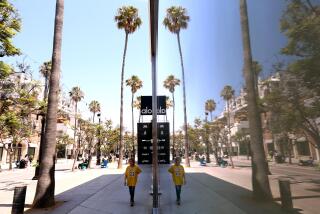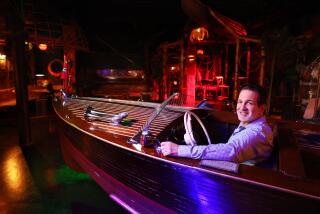Dana Point Deals With Dual Challenge : The New City Must Redevelop Old Districts While Charting a Course for the Future
Dana Point is trying to deal with its history and its future at the same time. Either one alone would be a tall order for any city planning effort, but the two taken together present a special challenge. The public should take advantage of the opportunity to attend some of the open houses planned for different parts of the city.
Dana Point has this unusual challenge because it is tackling two aspects of city planning at the same time. It has a history, going back to the days of the 1920s, when development was haphazard. Some very good plans for such amenities as parks and a marketplace were never implemented. The Depression hit, and the best-laid plans for the future were set aside.
And yet Dana Point is just taking off as one of Orange County’s newest cities, having been incorporated less than two years ago. So the city must engage in urban redevelopment at the same time it tries to chart a course for the future.
Because so much of the development of Orange County is recent, the concept of redevelopment is fairly new and is associated mostly with older areas. But Dana Point has old neighborhoods to attend to even as it tries to fulfill a requirement of state law that, as a new city, it produce a general plan within 30 months of incorporation.
If all this sounds like a paradox--a new city charting a brand-new course and yet dealing with old problems--well, welcome to a fascinating part of the county, perhaps best known for its tidy harbor.
For the redevelopment, Dana Point has targeted four areas, all suffering from blight.
The Lantern District has about 167 acres of teeming apartments and small residences that have classic problems of urban decay.
The Harbor Bluff, an area overlooking Harbor Drive, has unstable bluffs and unstable Cove Road.
Doheny Village is an area of about 148 acres in the old Capistrano Beach area along Doheny Park Road that has been identified by police as a high-crime area with deteriorating homes and businesses.
The PCH Couplet is a mainly commercial area that needs sprucing up.
The general plan must be put together first, then the city will use money from a redevelopment agency to pay for any changes that are made. The challenge will be to preserve some the area’s small-town charm while rooting out blight and decay. But it’s a task worth meeting, and one residents very much ought to be involved in.
More to Read
Sign up for Essential California
The most important California stories and recommendations in your inbox every morning.
You may occasionally receive promotional content from the Los Angeles Times.










